A battery of 15 V and negligible internal resistance is connected across the diagonally opposite corners of a cubical network consisting of 12 resistors each of resistance 5Ω . Determine the equivalent resistance of the network and the current along each edge of the cube.

The network is not reducible to a simple series and parallel combinations of resistors. There is, however, a clear symmetry in the problem which we can exploit to obtain the equivalent resistance of the network. The paths AA., AD and AB are obviously symmetrically placed in the network. Thus, the current in each must be the same, say, I. Further, at the corners A., B and D, the incoming current I must split equally into the two outgoing branches. In this manner, the current in all the 12 edges of the cube are easily written down in terms of I, using Kirchhoff.s first rule and the symmetry in the problem. Next take a closed loop, say, ABCC.EA, and apply Kirchhoff.s second rule:
−IR−(1/2)IR−IR+E = 0 where R is the resistance of each edge and E the emf of battery. Thus, E =52IR
The equivalent resistance Ras of the network is
Req=E3I=56R
For R = 6Ω,Req = 5Ω and for E = 15 V
the total current = 31 ) in the network is
3I = 15/5= 3 A, i.e., I = 1A
The current flowing in each edge can now be read off from the figure.
Topper's Solved these Questions
- BOOK - VMC MODULES ENGLISHCHAPTER - CURRENT ELECTRICITYEXERCISE - SOLVED EXAMPLES24videos
CURRENT ELECTRICITY
- BOOK - VMC MODULES ENGLISHCHAPTER - CURRENT ELECTRICITYEXERCISE - PRACTICE EXERCISE-15videos
CURRENT ELECTRICITY
- BOOK - VMC MODULES ENGLISHCHAPTER - CAPACITORSEXERCISE - JEE Advance ( Archive ) LEVEL 481videos
CAPACITORS
- BOOK - VMC MODULES ENGLISHCHAPTER - DC CIRCUITEXERCISE - JEE ADVANCED ARCHIVE68videos
DC CIRCUIT
Similar Questions
Battery of 10 V and negligible internal resistance is connected across the diagonally opposite corners of a cubical network consisting of 12 resistors each of resistance 1Ω (Fig. 3.23). Determine the equivalent resistance of the network and the current along each edge of the cube.
 View Solution
View SolutionIn the adjoining network of resistors each is of resistance rΩ. Find the equivalent resistance between A and B.
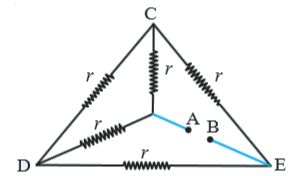 View Solution
View SolutionIn the given network of resistors, each of resistance R, calculate the equivalent resistance between the junctions A and E
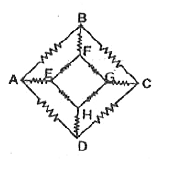 View Solution
View SolutionIn the adjoining network of resistors, each is of resistance r ohm, the equivalent resistance between points A and B is–
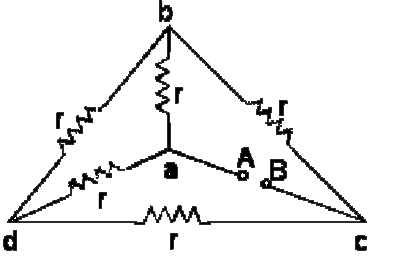 View Solution
View SolutionCalculate battery current and equivalent resistance of the network shown in figure.
 View Solution
View SolutionCalculate battery current and equivalent resistance of the network shown in figure.
 View Solution
View SolutionResistance of each resistor is R. Then the equivalent resistance across A and B is
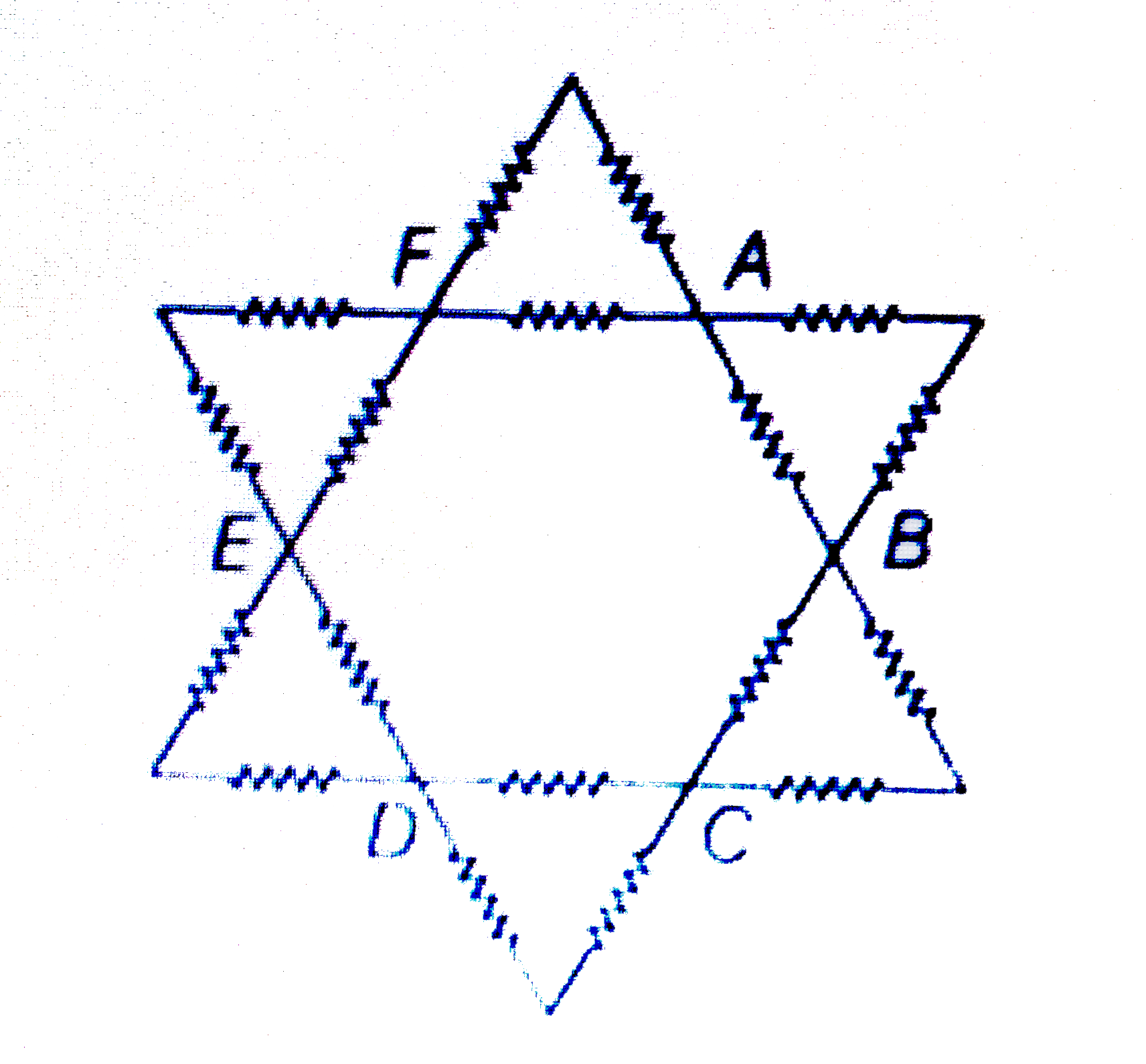 View Solution
View SolutionFigure (a) shows a cube made of 12 resistors each of resistance R. Find the equivalent resistance it the terminals A and B are connected to an emf source.
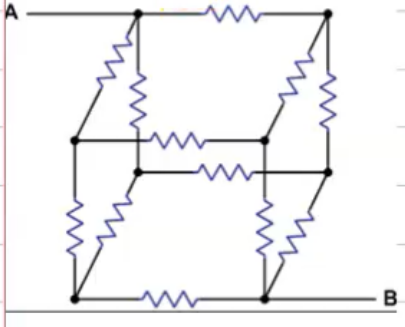 View Solution
View SolutionA 10 V storage battery of negligible internal resistance is connected across a 50Ω resistor. How much heat energy is produced in the resistor in 1 hour
View SolutionIn the network shown, each resistance is R. Calculate the equivalent resistance between A and B.
 View Solution
View Solution
